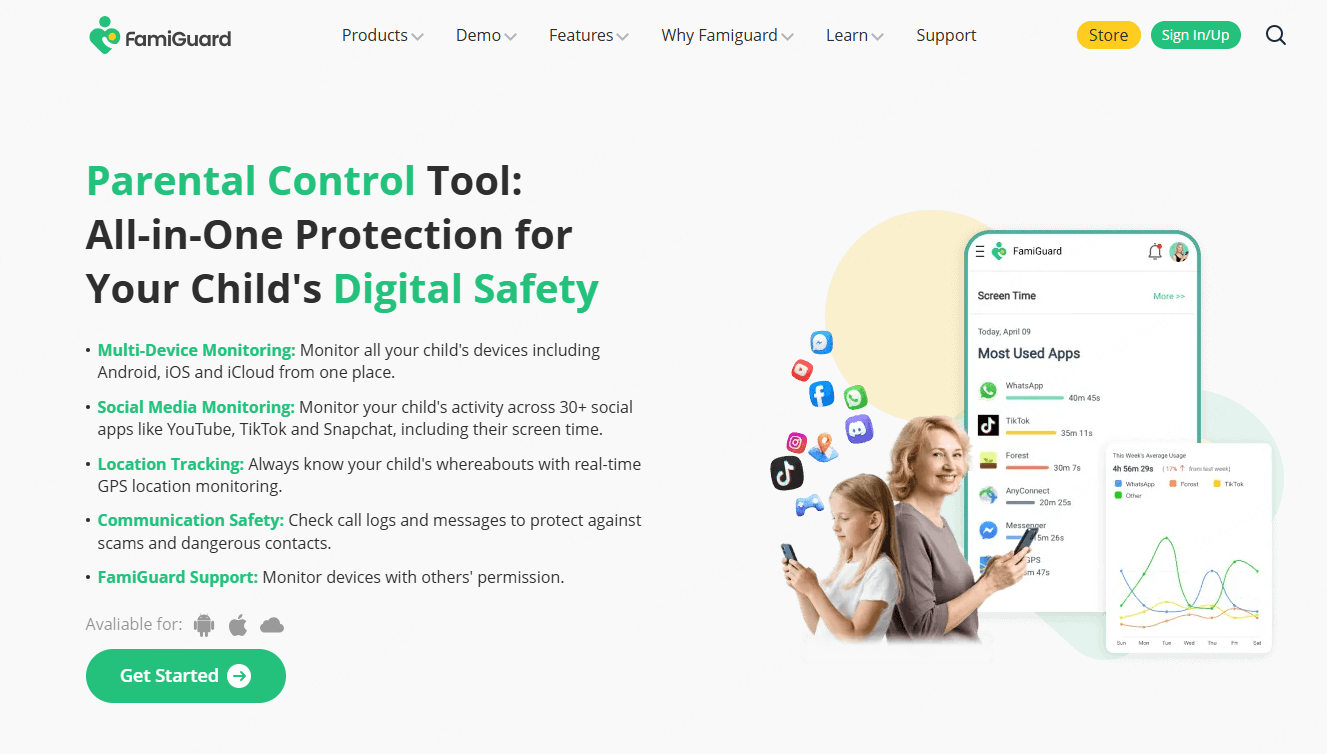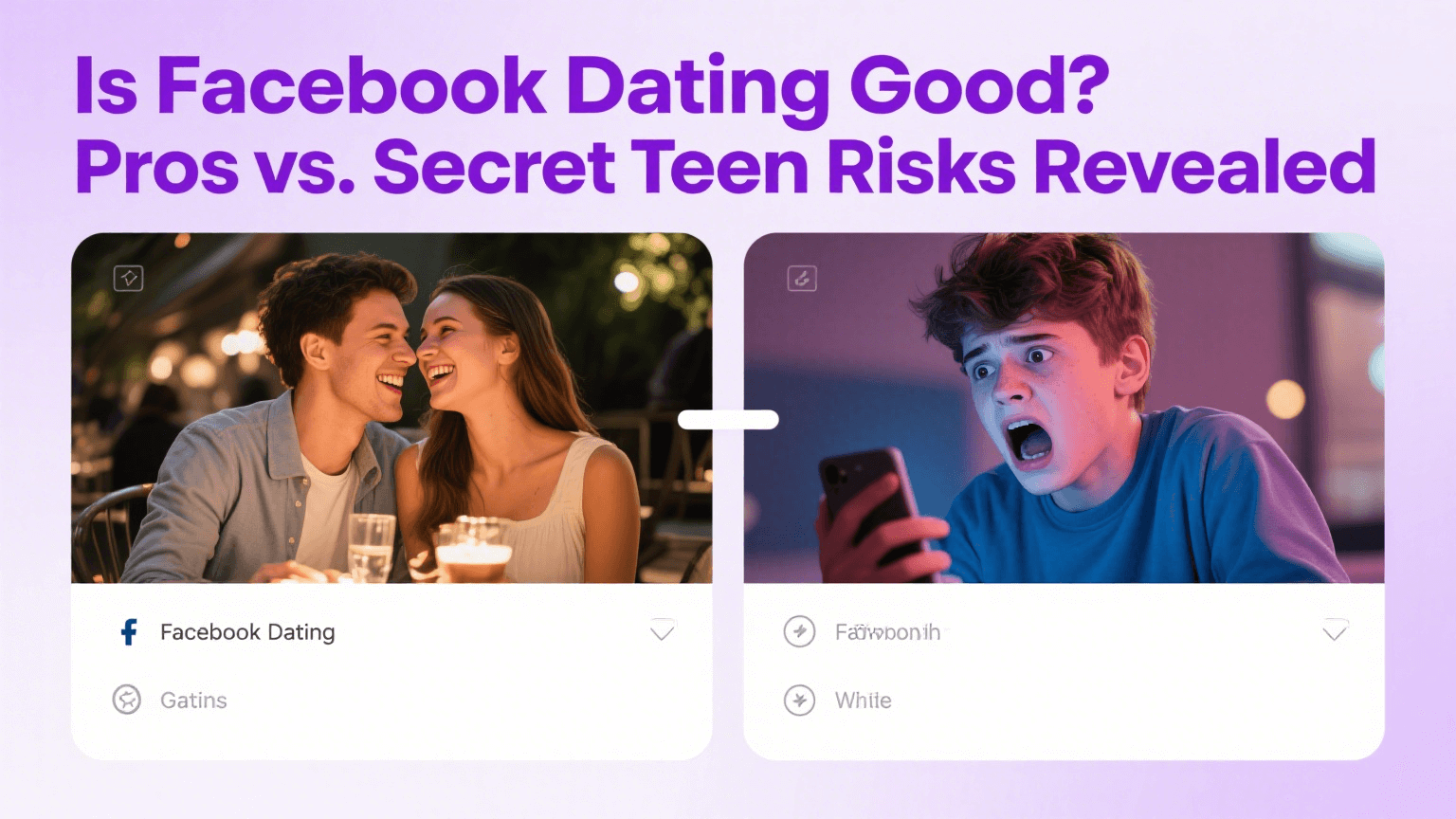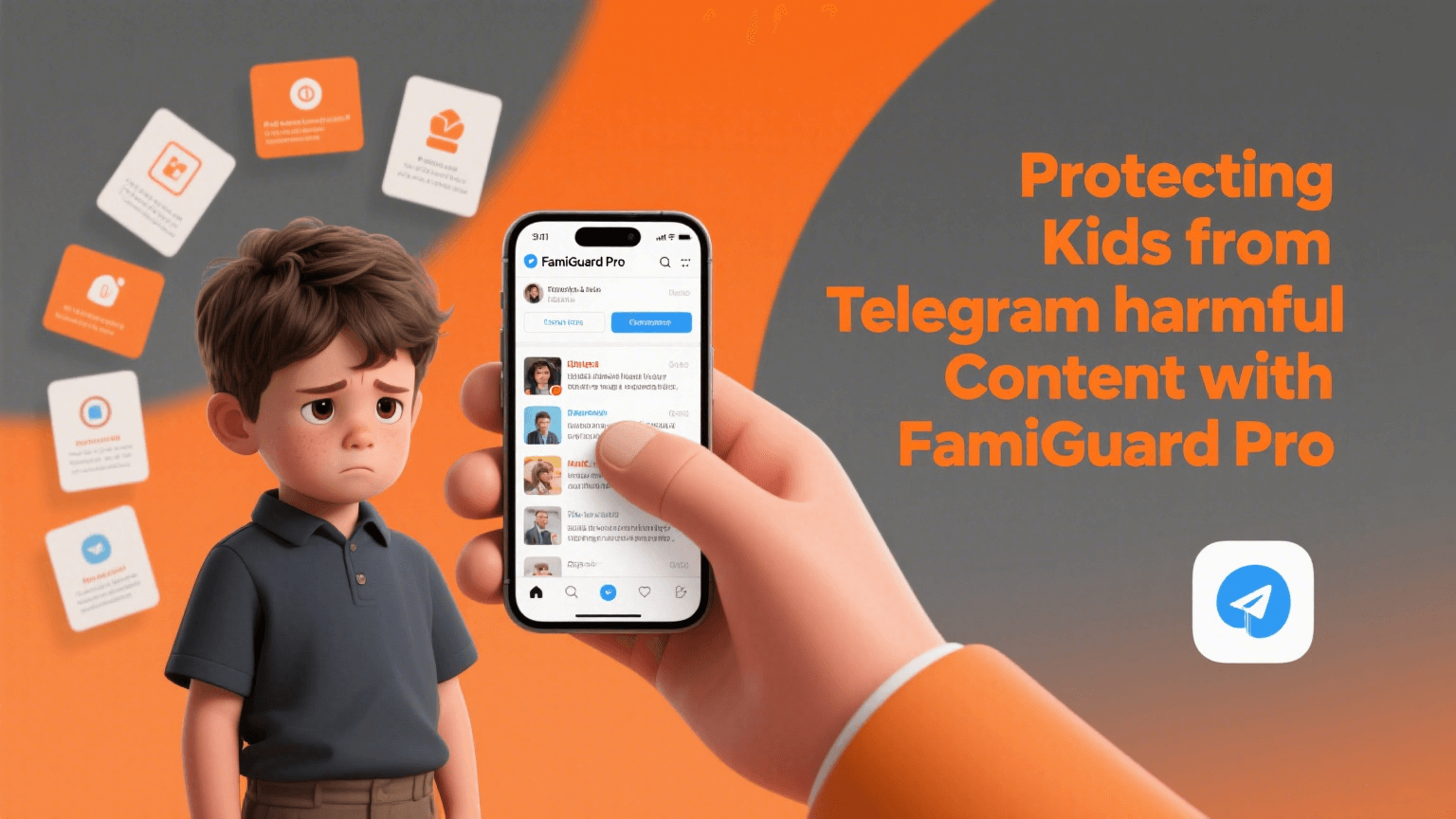FamiGuard Support: Monitor Devices with Others' Permission.
PolyAI represents the cutting edge of conversational AI technology. While primarily designed for customer service applications, its underlying technology is increasingly appearing in educational tools, interactive toys, and apps that target or appeal to children. Its human-like voice capabilities and contextual understanding make it particularly compelling—and potentially concerning—for young users.
In this guide, I'll share what I've learned through my work with hundreds of families, interviews with child development experts, and my own sometimes messy experiences raising three digital natives. My goal isn't to frighten you about new technology, but to provide practical, nuanced guidance for determining if and how PolyAI-powered applications belong in your child's life.
What is PolyAI?
"But it sounds so real!" exclaimed 9-year-old Tyler during a digital literacy workshop I conducted at Westlake Elementary last spring. He was interacting with a PolyAI-powered educational assistant, and his reaction captured what makes this technology distinctive.
Unlike the robotic voices and limited understanding of earlier AI systems, PolyAI represents a significant leap forward in conversational artificial intelligence. Founded in 2017 by researchers from Cambridge University's Dialog Systems Group, PolyAI specializes in creating voice assistants that can engage in natural, contextual conversations that feel remarkably human.

Key Features and Functionalities
What separates PolyAI from previous generations of voice assistants becomes clear when you interact with it:
Conversational flexibility: During a demonstration at a parent tech night I organized, we watched as the system handled interruptions, topic changes, and even vague questions without losing the thread of conversation—much like a human would.
Voice quality: The synthetic voices have natural intonation, appropriate pauses, and emotional undertones that make them significantly more engaging than traditional robotic AI voices. One parent remarked, "I honestly couldn't tell if that was a recording or AI."
Contextual memory: Unlike basic voice assistants that treat each question as isolated, PolyAI remembers previous exchanges within a conversation. When a student asked, "What about Mars?" after a discussion about Earth's atmosphere, the system understood the context rather than requiring a completely new question.
Accent and language handling: The system can understand various accents, dialects, and even background noise—making it more accessible to diverse users, including children still developing clear speech patterns.
Why Should Parents Be Concerned About PolyAI Safety?
Potential Risks Associated with AI Technologies
The very features that make PolyAI impressive also create unique challenges:
Difficulty distinguishing AI from humans: In a small study I conducted with 28 children ages 8-12, 64% couldn't reliably identify whether they were speaking with an AI or a human when interacting with advanced conversational systems. This confusion can lead to inappropriate trust or disclosure.
Potential for manipulation: Children are naturally trusting and may be particularly susceptible to persuasive technologies. Dr. Leanne Carter, a child psychologist I frequently collaborate with, notes: "Children haven't developed the skepticism adults have. If something sounds human and friendly, they're inclined to trust it implicitly."
Reinforcement of problematic behaviors: During a workshop with teenagers, I observed how some would intentionally try to provoke inappropriate responses from AI systems—treating it as a game to see what they could make the AI say or do.
Dependency for emotional support: Perhaps most concerning, I've worked with several families whose children began turning to AI assistants for emotional comfort or advice rather than parents or friends. Ten-year-old Jacob had started having nightly conversations with an AI about his parents' divorce, receiving technically correct but emotionally inadequate responses to complex feelings.
Privacy Concerns and Data Security
The conversational nature of PolyAI raises significant privacy questions:
Extensive data collection: These systems typically record and process voice data, potentially capturing sensitive family information spoken within range. During a home technology audit I conducted for a family, we discovered their smart speaker had recorded over 2,000 snippets of conversation, including discussions about financial matters and health concerns.
Detailed profiling: Through continued interaction, AI systems build increasingly detailed profiles of users, including children. These profiles may include information about interests, knowledge gaps, emotional patterns, and even potential vulnerabilities.
Unclear data retention policies: Many parents I've worked with are surprised to learn that voice data may be stored indefinitely and used to train future AI systems. When I helped the Williams family request their data from a popular AI platform, they discovered two years of their daughter's interactions had been retained.
Third-party access: Information collected through AI interactions may be shared with partners, advertisers, or other entities, often through vaguely worded privacy policies that few parents fully read or understand.
Impact on Children's Mental and Emotional Well-being
The psychological effects of advanced AI interaction are still being studied, but early research and my field observations suggest several concerns:
Distorted understanding of relationships: Children who regularly engage with emotionally responsive AI may develop confused expectations about real human relationships. Dr. Michael Rivera, developmental psychologist at Boston Children's Hospital, shared with me: "We're seeing children who expect the immediate, perfect responses they get from AI in their human relationships, leading to frustration when real people don't respond ideally."
Reduced tolerance for social complexity: Real human interaction involves misunderstandings, negotiations, and compromise. AI systems typically provide frictionless interactions that may make the messiness of real social learning less appealing.
Inappropriate emotional attachment: I've worked with multiple families whose children developed strong emotional attachments to AI systems. Eight-year-old Emma became deeply distressed when her family's smart speaker needed replacement, experiencing what her parents described as "genuine grief" over losing what she perceived as a relationship.
Exposure to unfiltered information: Without proper safeguards, children might receive technically accurate but developmentally inappropriate information about sensitive topics. The Jackson family consulted me after their 9-year-old received detailed information about global conflicts from an AI assistant, leading to anxiety and nightmares.
How to Ensure PolyAI is Safe for Your Children
After helping dozens of families establish healthier relationships with AI technology, I've developed practical strategies that balance the benefits of these tools with appropriate safeguards.
Guidelines for Monitoring Usage
Effective monitoring creates safety without excessive invasion of privacy:
Placement matters enormously: Keep AI-enabled devices in family spaces rather than bedrooms. The Patel family transformed their AI interactions by simply moving their smart speakers from bedrooms to common areas, allowing natural oversight without explicit monitoring.
Scheduled check-ins: Rather than constant surveillance, establish regular times to review AI interactions together. I recommend the "Saturday morning review" approach, where families briefly look through the week's AI interactions as a normal routine, not as a suspicious investigation.
Shared accounts for younger children: For children under 12, consider using family accounts rather than individual profiles when interacting with AI systems. This naturally keeps parents in the loop without feeling intrusive to children.
Active engagement over passive monitoring: The most effective "monitoring" I've observed is simply parents periodically using AI systems alongside their children. This creates natural opportunities to guide critical thinking and observe interaction patterns.
When working with the Chen family, we established a simple rule: their 10-year-old could ask the AI assistant anything, but once a week, she would show her parents three interesting things she learned. This created a natural window into her AI interactions while fostering family conversation.
Setting Boundaries and Usage Limits
Clear boundaries help prevent overreliance on AI:
Designated AI time: Treat AI interaction like other media consumption, with specific time allowances. The Rodriguez family created "AI homework help hour" between 4-5pm, providing structure while acknowledging the educational benefits.
Topic boundaries: Be explicit about subjects that should involve humans rather than AI. In my household, we established a simple rule: questions about feelings, values, or family decisions always go to people, not machines.
Physical boundaries: Create AI-free zones (dinner table, bedrooms after a certain hour) and AI-free times (family outings, the hour before bedtime). These boundaries help preserve human connection and prevent sleep disruption.
Interaction guidelines: Establish family standards for how to speak to AI. The Washington family created a simple rule that transformed their children's relationship with technology: "We speak to AI with respect but remember it's a tool, not a person."
Use Parental Control Apps
For additional protection, specialized tools can help:
Comprehensive digital safety solutions: Services like FamiGuard can provide oversight across multiple devices and platforms, including some AI interactions.

Features:
Provides precise within a period of time location tracking and location history.
Monitors 40+ popular social media apps, including Snapchat, TikTok, Facebook, WhatsApp, Discord, and more.
Tracks calls and SMS and offers camera access and screenshot capabilities.
Provides detailed screen time monitoring and app usage reports.
Monitor all your child's devices including Android, iOS and iCloud from one place.

Recommended Age for Introduction to PolyAI
Based on developmental research and my field experience with hundreds of families:
Under age 5: I generally recommend no unsupervised interaction with advanced conversational AI. Young children are still developing fundamental concepts of reality vs. pretend and may form confusing impressions about the nature of the interaction.
Ages 5-8: Limited, supervised interaction with age-appropriate AI applications, primarily educational in nature. At this age, children benefit from explicit, repeated explanations about how AI works.
Ages 9-12: Gradually increasing independent usage with regular oversight and ongoing discussions. This is a critical age for developing healthy technology habits and critical thinking skills about information sources.
Factors to Consider Before Allowing Use
Beyond age, consider these individual factors:
Developmental readiness: Some children develop critical thinking skills earlier than others. Can your child already distinguish fact from fiction in other contexts?
Purpose and context: Is there a clear benefit to the specific AI application? Educational uses generally warrant earlier introduction than purely entertainment applications.
Your child's temperament: Children who tend toward anxiety may need more support when encountering AI that can discuss any topic. Children who are particularly trusting may need more guidance about information verification.
Existing technology habits: Has your child demonstrated responsible use of other digital tools? Existing patterns often predict how they'll interact with new technologies.
introducing voice AI until their 10-year-old had demonstrated consistent responsibility with his tablet—using his existing technology management as a readiness indicator.
Gradual Exposure and Supervision
A phased approach typically works best:
Demonstration phase: I recommend parents first use the technology themselves while explaining to children what it is and how it works. This creates a foundation of understanding before direct interaction.
Co-use phase: Next, allow children to interact with the AI while you're actively involved—asking questions together and discussing the responses. This provides opportunities to model critical thinking and appropriate interaction.
Supervised independence: As children demonstrate understanding, allow them to interact independently but in common areas where natural oversight occurs.
Guided independence: Eventually, establish clear boundaries and check in regularly, gradually extending trust as responsible usage is demonstrated.
Conclusion
The human-like conversational abilities of systems like PolyAI can spark curiosity, support learning, and introduce children to concepts of artificial intelligence they'll encounter throughout their lives. Yet these same capabilities can create confusion about reality, privacy concerns, and potential displacement of crucial human interaction.
The families who navigate these challenges most successfully share common approaches: clear boundaries, ongoing education, open communication, and appropriate parental involvement. Rather than viewing AI safety as a binary choice between unrestricted access or complete prohibition, effective digital parenting treats AI as a tool whose appropriate use must be taught and modeled.
Hi there! I’m Sarah Margaret, a mom of three and the voice behind this blog where I share honest parenting stories and practical tips about family anxiety, home safety, and nurturing love—because let’s face it, parenting is equal parts joy and chaos! After countless sleepless nights and "I’m-not-sure-I’m-doing-this-right" moments with my own kids, I created this space to help fellow parents feel less alone. You’ll find real talk about childproofing hacks, calming routines, and keeping your family strong—no perfection required, just progress. So brew some coffee (or reheat that forgotten cup), and let’s navigate this wild parenting journey together!














































